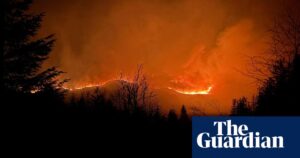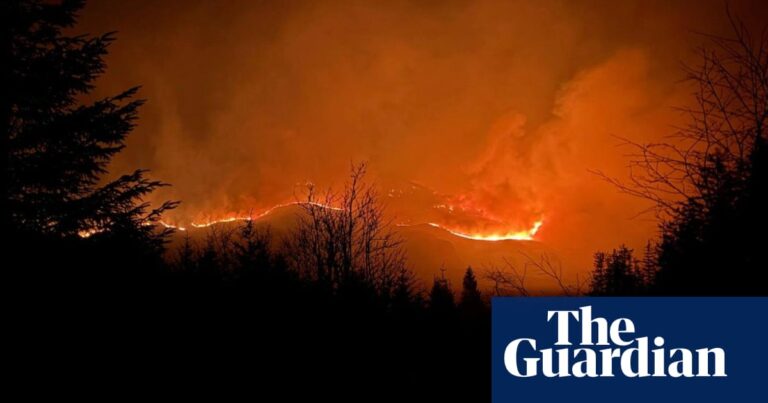Heavy rains triggered flash floods and caused torrents of cold lava and mud to flow down a volcano’s slopes on Indonesia’s Sumatra island, killing at least 41 people and leaving more than a dozen others missing, officials have said.
Monsoon rains and a major mudslide from a cold lava flow on Mount Marapi caused a river to breach its banks and tear through mountainside villages in four districts in West Sumatra province just before midnight on Saturday. The floods swept away people and submerged more than 100 houses and buildings, national disaster management agency spokesperson Abdul Muhari said on Sunday.
Cold lava, also known as lahar, is a mixture of volcanic material and pebbles that flow down a volcano’s slopes in the rain.
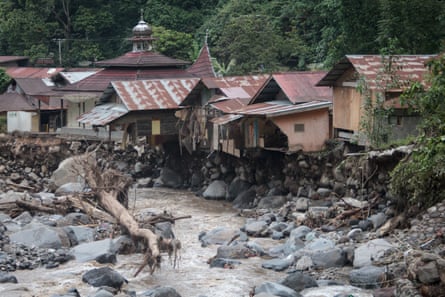
As of Monday morning 41 people had been killed in the flooding and another 17 were missing, according to Ilham Wahab, a West Sumatra disaster mitigation agency official.
Three were missing in Agam district and 14 in Tanah Datar, both the worst-hit areas of the flood and home to hundreds of thousands of people, Ilham said.
About half of the dead were found in the village of Canduang in Agam on Sunday, while nine were found in Tanah Datar and eight were found in the region of Padang Pariaman.
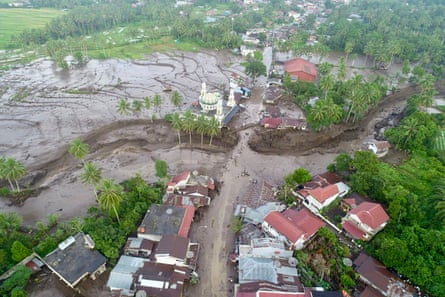
Flash floods on Saturday night also caused main roads in Tanah Datar district to be blocked by mud, cutting off access to other cities, local police chief Kartyana Putra said on Sunday.
Videos released by Basarnas showed roads that were transformed into murky brown rivers.
The disaster came just two months after heavy rains triggered flash floods and a landslide in West Sumatra’s Pesisir Selatan and Padang Pariaman districts, killing at least 21 people and leaving five others missing.
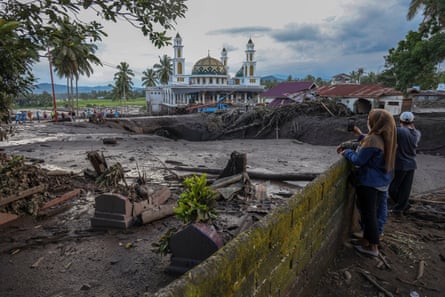
Mount Marapi, which stands at 2,885 metres (9,465ft), erupted late last year killing 23 climbers who were caught by surprise. The volcano has been at the third-highest of four alert levels since 2011, indicating above-normal volcanic activity under which climbers and villagers must stay more than 3km (about 2 miles) from the peak, according to Indonesia’s center for volcanology and geological disaster mitigation.
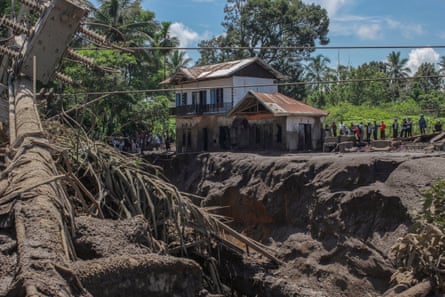
Marapi is known for sudden eruptions that are difficult to predict because the source is shallow and near the peak, and its eruptions aren’t caused by a deep movement of magma, which sets off tremors that register on seismic monitors.
Marapi has been active since an eruption in January 2023 that caused no casualties. It is among more than 120 active volcanoes in Indonesia. The country is prone to seismic upheaval because of its location on the Pacific “Ring of Fire,” an arc of volcanoes and fault lines encircling the Pacific Basin.
Source: theguardian.com




